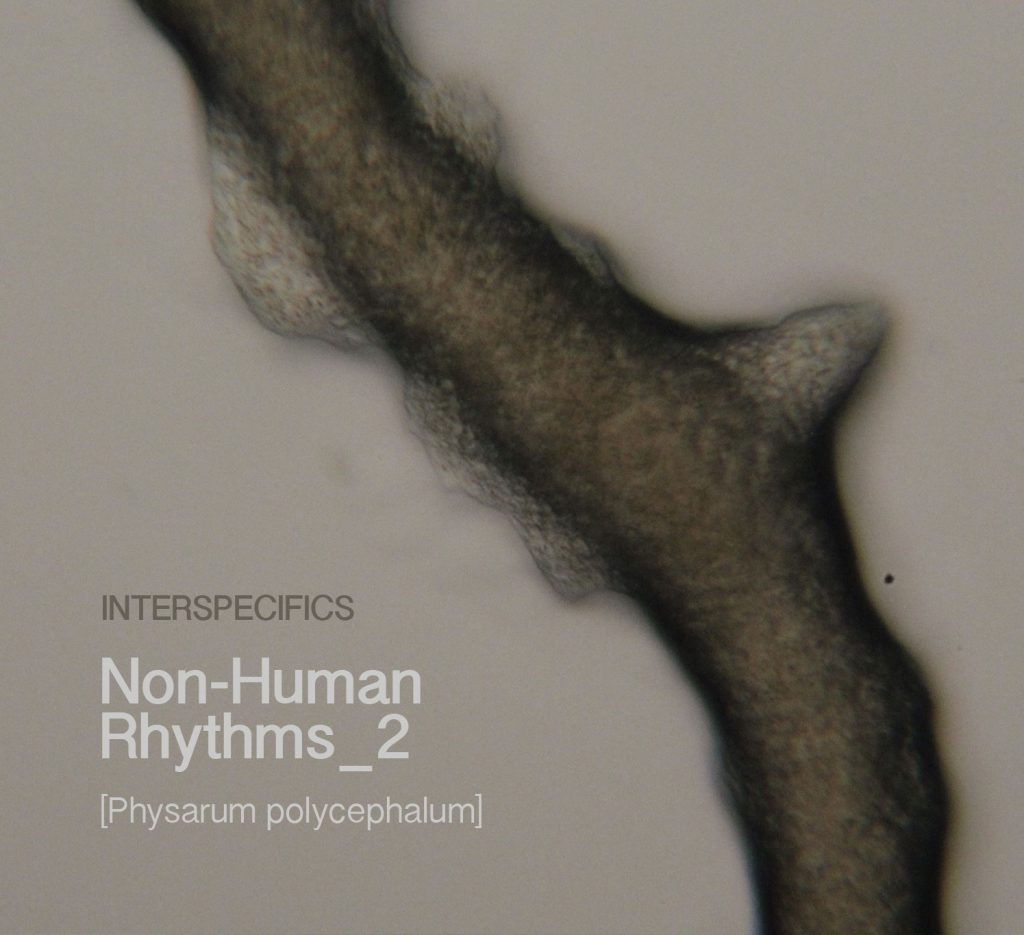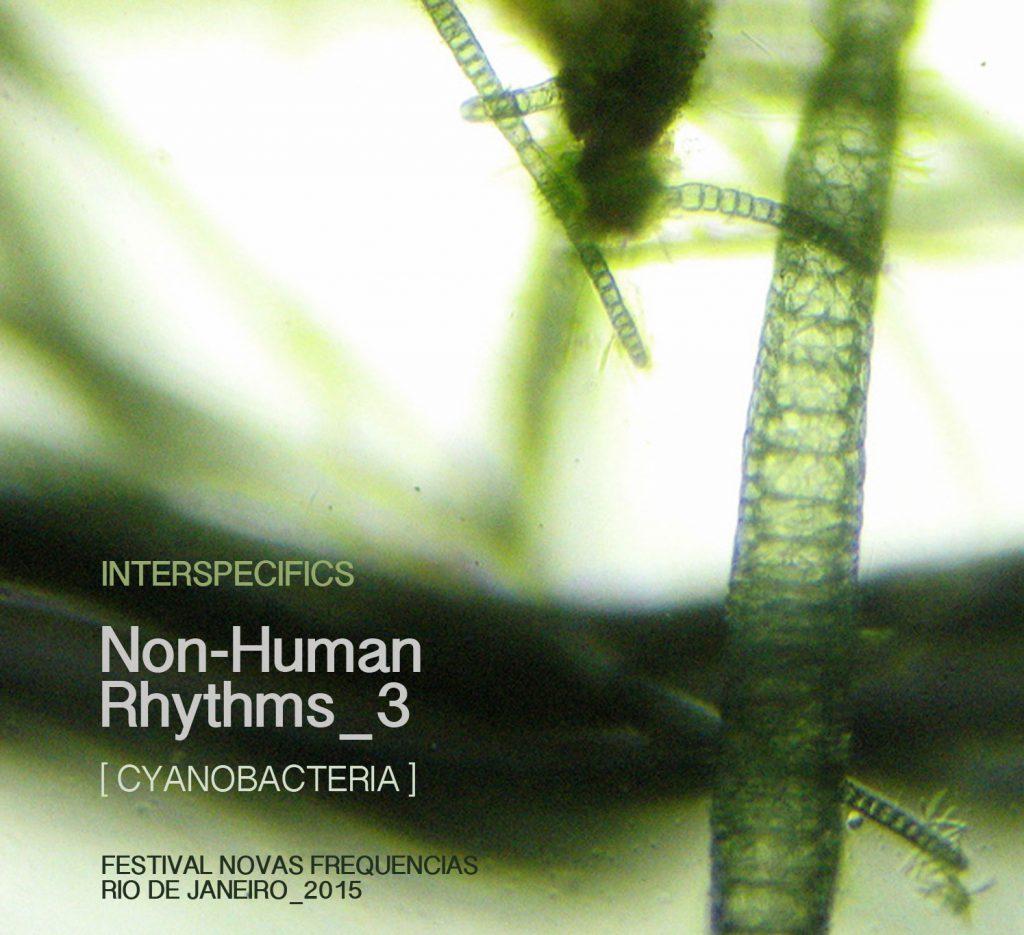Interspecifics collective live_ Non Human Rhythms featuring Physarum @ Inoculum, CLB Berlin, 2016.
Non-Human Rhythms 1

Non-Human Rhythms 1 is the first of a series of live recordings featuring different micro-organism and their bio-electrical activity translated in to sound, 30 minutes of signals originated in a DIY bacterial fuel cells containing different bacterial consortiums.
Microbial fuel cells harness the power of bacteria and convert energy released in metabolic reactions into electrical energy. The cell consists of two electrodes separated by a semi-permeable membrane submersed in an electrolyte solution. The bacteria break down food wastes and sewage to generate an electric current and continue to replicate producing power indefinitely as long as there is a food source from which get nourished.
The cell is divided into two halves: aerobic and anaerobic. The aerobic half has a positively charged electrode and is bubbled with oxygen, much like a fish tank. The anaerobic half does not have oxygen, allowing a negatively charged electrode to act as the electron receptor for the bacterial processes. In collaboration with Juan David López Hincapié and Adrián Rodriguez García Ph.D from the Technological Development in Electrochemistry Mexico (CIDETEQ).
Non-Human Rhythms 2

Non-Human Rhythms 2 is the second release of a series of live recordings featuring different micro-organism and their bio-electrical activity translated into sound, 4 tracks of a slime mould sonification developed at Bauhaus Uni- versity as part of the Phychip project
Physarum polycephalum is a unicellular organism, an amorphous yellowish mass when in the plasmodial phase of its life cycle that can propagate on a large range of surfaces such as plastics, metals, glass and agar. This multi-headed slime mould feeds on bacteria, spores and other microscopic particles. During its foraging state the plasmodium shift its shape sending out protoplasmic tubes with cytoplasm flowing inside rhythmically ex- panding and contracting in response to simple favorable conditions.
Two main approaches were developed for the sonifica- tion of Physarum. The first one is focused on the ana- log behavior of the organism – bioelectrical activity – and the second one in an optical based pattern recognition software both are Open source hardware and software available on virtual repositories. These two systems en- able the creation of a bio-controller for auditory display purposes where common musical structures like texture, rhythms and phrasing can be selected, using the feeding of bioelectrical activity as the system actuator.
In collaboration with Theresa Schubert from Bauhaus University Weimar and the Phychip project team.
Non-Human Rhythms 3

During the fifth edition of the festival Novas frequencies in Rio de Janeiro, we were invited to perform a laboratory focus on the sonification of the bacteria present on the beaches of Rio. In the laboratory 10 local artists were selected through an open call. For a week we work together enabling a compact version of Bending Energy Lab that allowed them to create an interface between bacteria and their instruments. Thus creating the first non-human rhythms orchestra.
Participants in the laboratory:
Biônicos, David Charles Cole, Felipe Ridolfi, Gama, Henry Schroy, Negalê Jones, peppe de souza e Re Sil, Leslie García, Paloma López.
RELATED WORK: